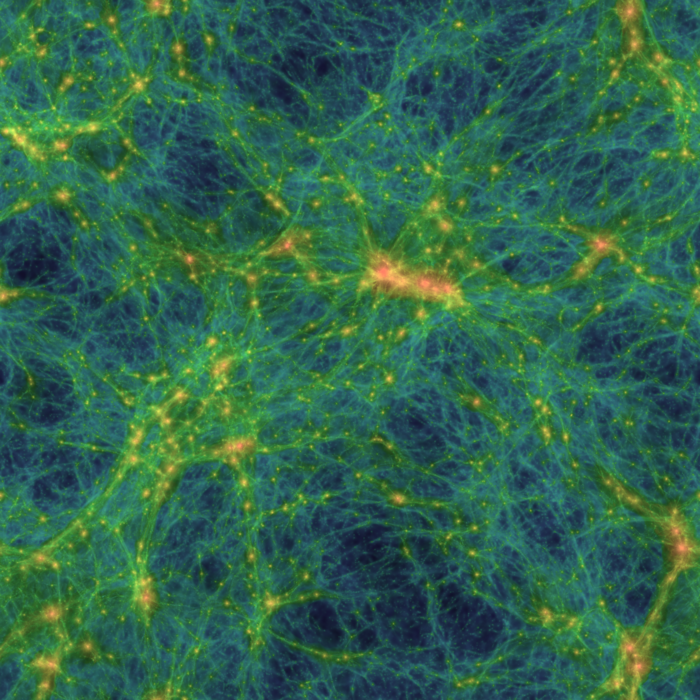According to a new theory put forth in a study recently published in the academic journal Physical Review Letters, dark matter could be composed of ultralight dark photons that heated the universe.
 2D projection of the cosmic web as obtained from a supercomputer simulation. Image Credit: International School for Advanced Studies
2D projection of the cosmic web as obtained from a supercomputer simulation. Image Credit: International School for Advanced Studies
The Cosmic Origin Spectrograph (COS) on board the Hubble Space Telescope, which measures the “cosmic web,” the intricate and flimsy network of filaments that fills the space between galaxies, says that this hypothesis is in excellent agreement with observations.
According to the data gathered by COS, the hydrodynamic simulations of the standard model of structure formation do not accurately predict the temperature of the cosmic intergalactic filaments.
The scientists stated, “Since dark photons would be able to convert into low-frequency photons and heat up the cosmic structures they could well explain the experimental information.”
Together with researchers from Tel Aviv, Nottingham, and New York Universities, SISSA researchers conducted the study.
Dark Photos are Good Candidate for Dark Matter
Study authors James S. Bolton from University of Nottingham, Andrea Caputo from CERN and Tel Aviv University, Hongwan Liu from New York University, and Matteo Viel from SISSA further stated, “Dark photons are hypothetical new particles that are the force carriers for a new force in the dark sector, much like how the photon is the force carrier for electromagnetism. Unlike the photon, however, they can have mass. In particular, the ultralight dark photon—with a mass as small as twenty orders of magnitude less than that of the electron—is a good candidate for dark matter.”
Similar to how different types of neutrinos mix, dark photons and regular photons are also anticipated to do so, allowing ultralight dark photon dark matter to transform into low-frequency photons.
These photons will heat the cosmic web, but unlike other heating mechanisms based on astrophysical processes, such as star formation and galactic winds, this heating process is more diffuse and effective even in regions that are not very dense.
The Missing Element
Usually, cosmic filaments have been used to probe small scale properties of dark matter, while in this case we have used for the first time the low redshift intergalactic medium data as a calorimeter, to check whether all the heating processes we are aware of are sufficient to reproduce the data. We found that this is not the case: there is something missing, that we model as a contribution produced by the dark photon.
Matteo Viel, Study Author and Professor, SISSA
The effort could inspire additional theoretical and observational investigations to explore the intriguing possibility that the dark photon could make up dark matter. The work identified the mass and mixing of the dark photon with the Standard Model photon required to reconcile the discrepancy between observations and simulation.
Journal Reference:
Bolton, J. S., et al. (2022) Comparison of Low-Redshift Lyman-α Forest Observations to Hydrodynamical Simulations with Dark Photon Dark Matter. Physical Review Letters. doi:10.1103/PhysRevLett.129.211102.